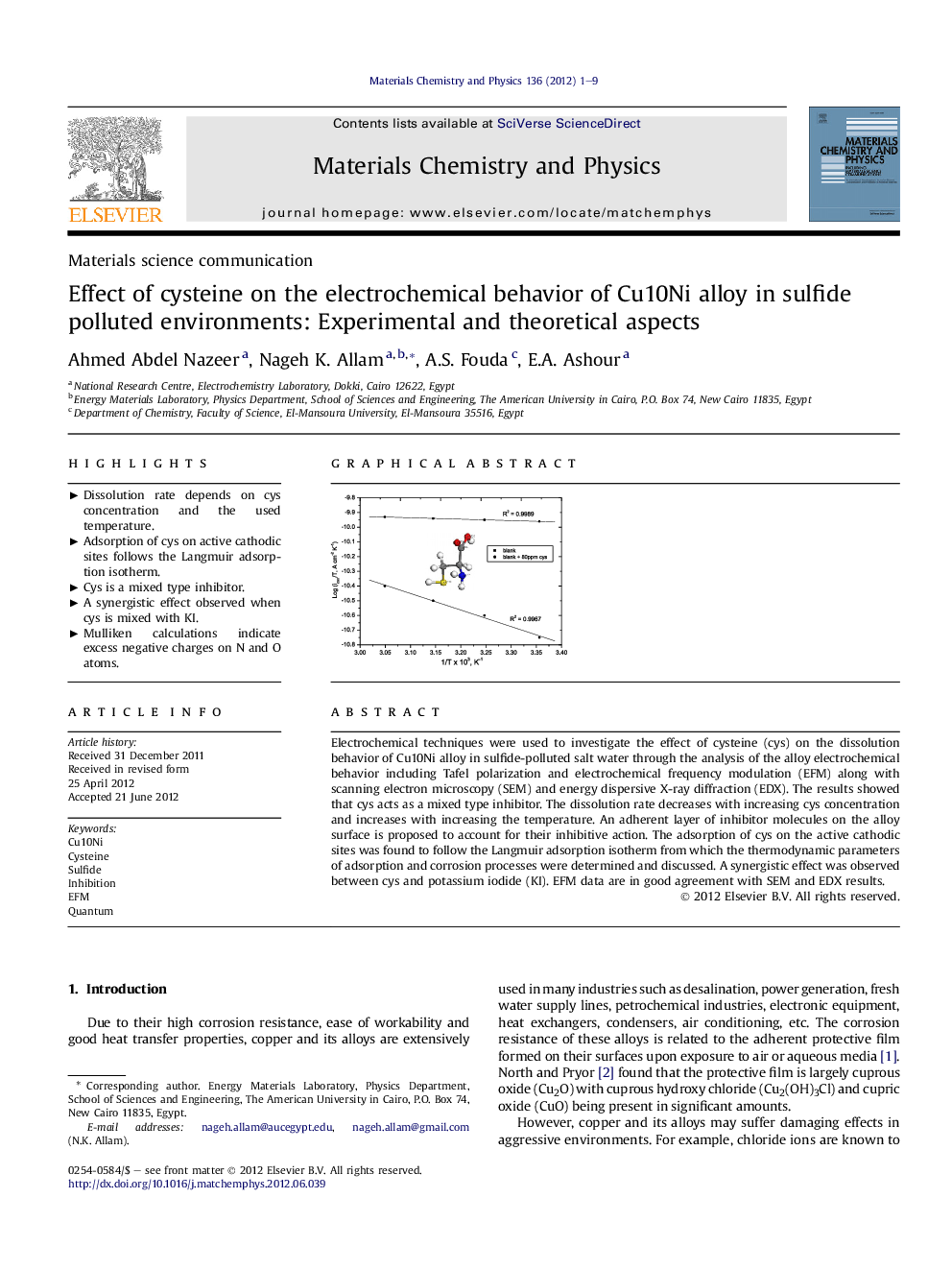| Article ID | Journal | Published Year | Pages | File Type |
|---|---|---|---|---|
| 1523768 | Materials Chemistry and Physics | 2012 | 9 Pages |
Electrochemical techniques were used to investigate the effect of cysteine (cys) on the dissolution behavior of Cu10Ni alloy in sulfide-polluted salt water through the analysis of the alloy electrochemical behavior including Tafel polarization and electrochemical frequency modulation (EFM) along with scanning electron microscopy (SEM) and energy dispersive X-ray diffraction (EDX). The results showed that cys acts as a mixed type inhibitor. The dissolution rate decreases with increasing cys concentration and increases with increasing the temperature. An adherent layer of inhibitor molecules on the alloy surface is proposed to account for their inhibitive action. The adsorption of cys on the active cathodic sites was found to follow the Langmuir adsorption isotherm from which the thermodynamic parameters of adsorption and corrosion processes were determined and discussed. A synergistic effect was observed between cys and potassium iodide (KI). EFM data are in good agreement with SEM and EDX results.
Graphical abstractFigure optionsDownload full-size imageDownload as PowerPoint slideHighlights► Dissolution rate depends on cys concentration and the used temperature. ► Adsorption of cys on active cathodic sites follows the Langmuir adsorption isotherm. ► Cys is a mixed type inhibitor. ► A synergistic effect observed when cys is mixed with KI. ► Mulliken calculations indicate excess negative charges on N and O atoms.
